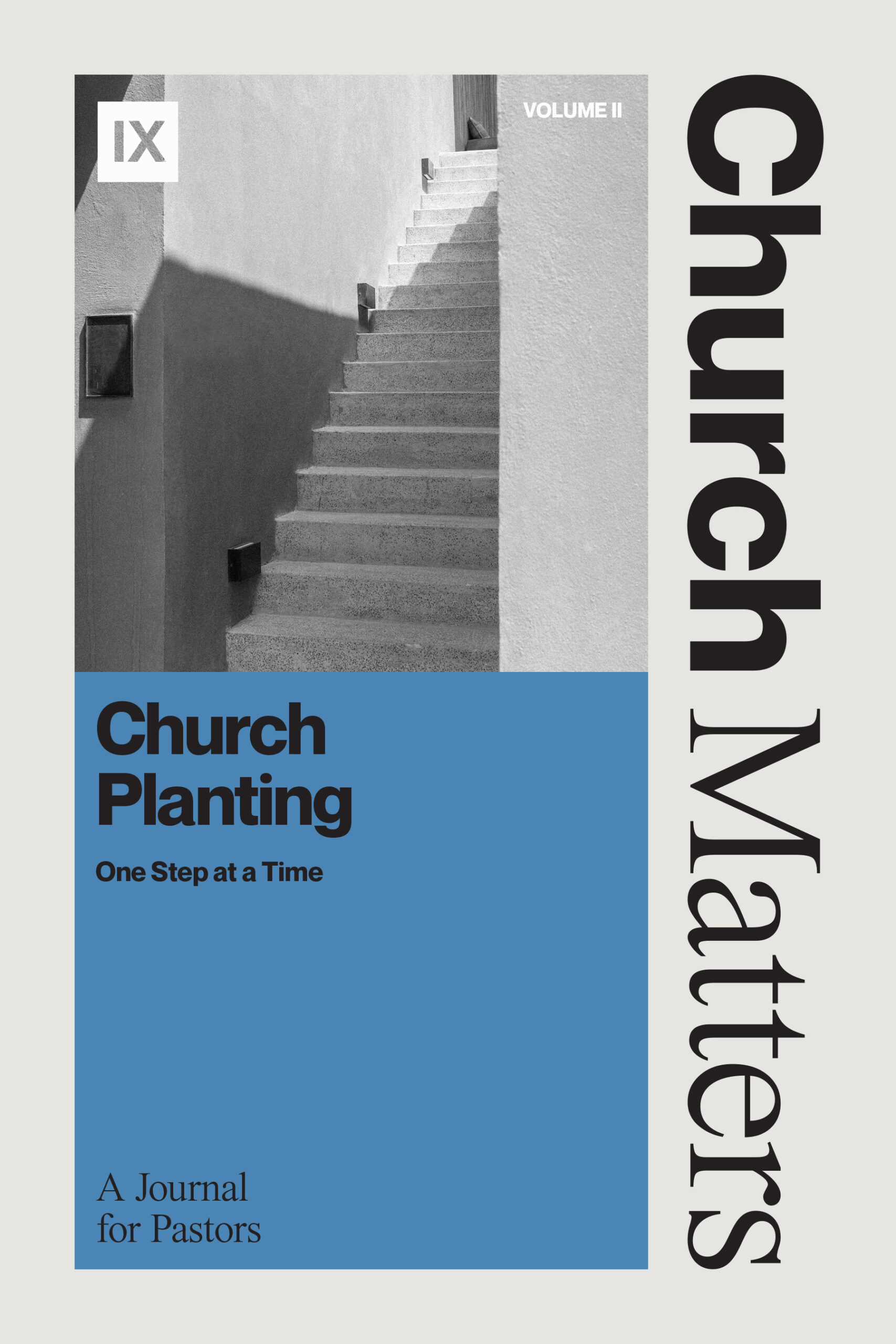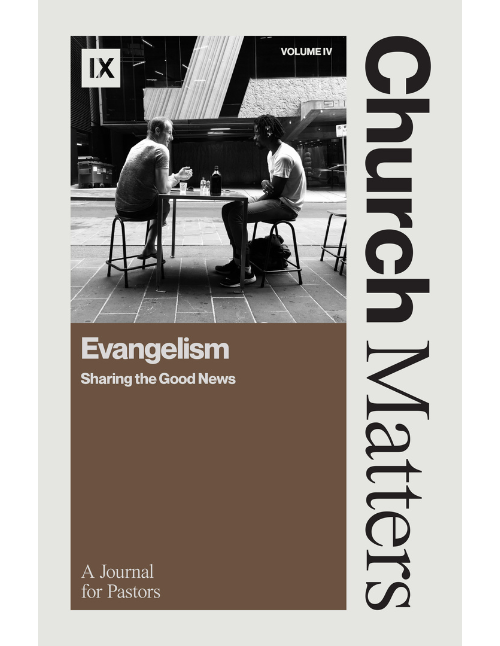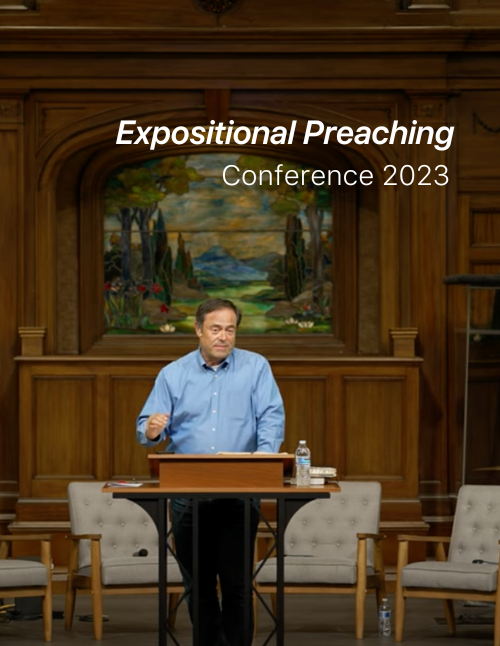Church Planting by Peaceable Division
In September our church did something crazy: we planted a church on the other side of our city.
Or maybe that doesn’t sound crazy. But hold on. We planted by literally dividing our church in half, and we did this as a relatively small and young church.
We didn’t grow to 800 and send out thirty. Our three-year-old church had 84 members before the plant, and 45 after. Our financial giving was reduced by more than fifty percent. Pre-plant, there were four families in my apartment complex; post-plant, only my family remained.
That very same week, there was an article here at 9Marks called “Church Planting by Peaceable Division.” To call it timely would be a massive understatement. The article highlights the historical prevalence of churches intentionally and amicably splitting for the proclamation of the gospel and the glory of God.
This is what we did, and I offer six lessons we learned from the process.
(1) God leads even young, small churches to plant; it’s not a mission merely for large, established churches.
Even as we were walking through our decision, there was something in me that fought back against it. Why? Well, our church hadn’t had time to “come into our own” yet. We could have used more elders and more leaders, not to mention people in general! Our budget could have been healthier. We could have taught on church planting a bit more.
All such hesitancies should be weighed seriously. If you are going to ask your congregation to do something painful, they need to understand the why. It’s good stewardship to consider budgets, and it’s wise to consider leadership capacity. But logistics can become too important and hinder churches from obedience.
At our church, we were quickly approaching size constraints. We looked at a map of our city and realized nearly half of our folks were traveling to the northeast part of the city, where we meet, from the southwest. Some even drove three hours round-trip. So we pushed ahead.
Maybe God is calling your church to plant before you’re ready, too?
But why not just secure a bigger facility or start a satellite campus in the southeast? That leads to a second lesson.
(2) The heat of planting tests and reveals a church’s ecclesiological priorities.
“To plant or not to plant” will always drive us to ask why we exist as a church. Is our ultimate goal comfortable community or missional community? How important is it that our church members live in proximity to the church and other church members? Do we more highly value having our act together in one place before reaching out to another? How highly do we value financial sustainability at the “mother church” before sending healthy members out from us? Do we desire to grow one big church in one neighborhood or to have two smaller churches in two neighborhoods? Do we think the local church is an assembly, or do we think it is viable to have multiple locations and call them one church? What about “protecting our DNA”—popular nomenclature these days—and our preaching ministry? Do we care about that? And if so, how much?
I’m not trying to tell you how each of those questions should be answered. I’m just saying this is a huge lesson in church planting—and you should be ready for it. Your priorities will be put on an operating table for everyone to poke and examine. You’ll have to answer questions you didn’t even know were questions and to question things you thought you’d already answered!
(3) Church planting reinforces gospel motivation.
This lesson wasn’t really on my radar, honestly, but it was a pleasant surprise. Our plant reinforced gospel motivation—and not just in the obvious ways about how we want more people to hear God’s Word and be exposed to gospel witness.
What I mean is it made me realize that the gospel must be the driving force behind each young man I disciple, each person I evangelize, each couple I counsel on our living room couch. Once you decide to be a church-planting church—and especially if you plant by peaceable division—it’s far too easy to be far too “strategic” with your time. We all have boundaries and filters, to be sure, but should I keep counseling this couple when I know they’ll be heading to the church plant in three months? Should I keep building into this potential elder when he’ll likely be an elder in the other church and not mine?
Of course I should! And I should because the point of ministry isn’t building my own kingdom; it’s building God’s. I’d hope the gospel would motivate me regardless, but the process of planting reinforced it for me.
(4) Church planting by peaceable division presents unique pastoral challenges.
Let me list a few:
- Your elders have to lead courageously like never before. Emotionally, nobody wants to plant, and it will almost certainly stall out unless you have leaders out front with the standard.
- Your elders need to be on the same page about how to counsel members. There will be a ton of questions: Should I stay or go? What if one church is closer to my home but the other is closer to my work? When do I have to make a decision? What is the process if I want to go? What things should I consider if I’m equidistant to both churches? What if I’m closer to one church but my mom’s group will end up at the other church? Do I just get to pick or are the elders making a recommendation about where I should go? The questions will come. Be ready.
- If you’re planting by peaceable division, both churches will feel like church plants for a while. Help members think about the needs at both churches as they’re making their decisions.
- Get on the same page with other elders and communicate well. Will any elders be “recruiting” for either church? Do we want this to happen at one church but not the other? Who are some of the key leaders each pastor is hoping to have on their team once the dust settles? Over-communicate on the front end and talk through as much as you can—it will serve you well.
- One of the biggest challenges for me was that I processed the reality of the plant far earlier than everyone else. This caused me to be less empathetic once the plant happened. I had mentally moved on while many of our members were dealing with it afresh. As a result, I’m not sure I was in a good place to shepherd them as well as I could have.
These are just a few of the unique challenges and opportunities. You’ll have your own; be reflective and patient.
(5) Church planting is an opportunity for Satan.
This one is obvious, but church planting accompanies unique temptation for division, disputes, and hurt feelings. Be on the lookout for opportunities Satan may use to drive relational wedges that cause disunity. We should always give the benefit of the doubt to our friends, assume godly motives among godly leaders, and be wary of the sin in our own hearts.
Any time there’s a plant, Satan will tempt Church A to keep a watchful eye on Church B. This is good insofar as the “mother church” wants to make sure the plant is growing in the joy of the Lord and remains free from false gospels. Yet churches must guard against competitiveness or being suspicious anytime the other church does something new or different.
While we’re certainly not perfect, we’ve worked to remain on the “same team.” Both churches frequently pray for each other publicly during the morning and evening gatherings. We share pulpits with each other. If we bring a guest speaker in town, we try to share. We invite each other to events, conferences, and some retreats. We formed an association (our two churches plus others) to band together for pastoral training, church planting, and missions. Be on the lookout for ways Satan will use this for his good and fight the good fight.
(6) Church planting is really hard but really worth it.
I’ll put it all together in one final lesson: church planting by peaceable division was really, really hard, but also really, really worth it. The biggest struggles for us involved emotional difficulties: friendships complicated, healthy community shaken up. The smaller your church and the deeper your community, the bigger this struggle will be.
And to that, we say, “Praise God!” What a great problem to have! This is true, but it also doesn’t make the struggle any less real or difficult.
On top of that came the difficulties of not having enough elders, deacons, and money. Our church was left with less experienced preachers; we also lost a majority of the large families. I could go on because the list of challenges isn’t short.
But for all the burdens, we experienced far more blessings. On any given Sunday, our churches have attendees from six of the seven continents, and they’ll all hear the gospel. Our church in the northeast has had more room for more people to come in and hear God’s Word proclaimed, and the plant in the southwest has been able to provide a healthy church for many who hadn’t heard of our church or who had but didn’t want to make the hour-plus trek across the city. We’ve also been able to start an association that seeks to strengthen even more local churches.
On a personal level, the whole experience of church planting strengthened my faith. I had to trust God like never before and take my hands off situations that, in my flesh, I so greatly wanted to manipulate. God met me—and all of us—in the midst of any confusion, and truly gave us peace that surpasses understanding.
May it be so for you as well. Pray for us—that we’d be willing, joyful, and expectant should God entrust us with such an opportunity again.








